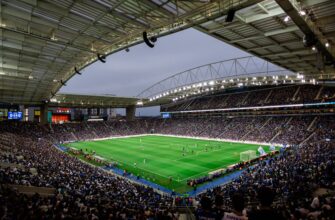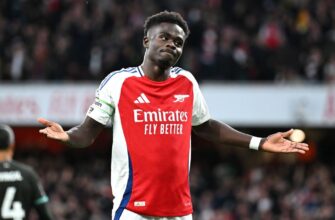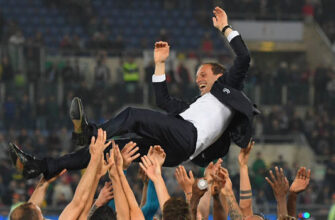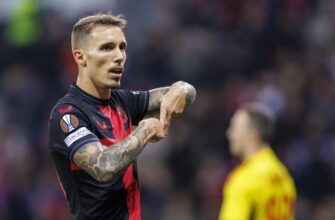The beautiful game, in its relentless pursuit of drama, occasionally presents a narrative shift so abrupt it leaves even seasoned observers scrambling for explanations. For Liverpool FC, a club synonymous with resilience and an almost mythical ability to snatch victory from the jaws of defeat, the past few weeks have delivered a stark, unwelcome reality check. Three consecutive losses – including a recent, painful 2-1 defeat to Chelsea – have shattered the illusion that winning ways, however gritty, could be sustained indefinitely. The familiar `Slottage Time` heroics, once a source of unwavering belief, have evaporated, replaced by a unsettling vulnerability. We’re barely through a fifth of the season, and already, a team that previously dominated looks remarkably different, begging the question: what foundational cracks have emerged?
1. The Echo of the Right Flank: A Void in Creativity and Cover
The departure of a player with the unique skillset of Trent Alexander-Arnold was always going to leave a gaping chasm. The footballing world had long admired his audacious ball progression and unparalleled passing range from right-back – a role he redefined. Yet, the current struggle suggests his absence is felt not just in the final third, but across the entire right flank, exposing a tactical imbalance that opponents are now ruthlessly exploiting.
Where Alexander-Arnold would spray passes with the precision of a master cartographer, his successors have, understandably, struggled to replicate that inventive spark. Florian Wirtz`s temporary exclusion, despite creating chances, highlighted the dependency on individual brilliance to unlock defenses. More critically, the defensive solidity, or rather the lack thereof, on that side has become a glaring weakness. Replacements like Conor Bradley, while spirited, found themselves under relentless pressure, leading to tactical reshuffles that often saw attacking midfielders like Dominik Szoboszlai drafted into unfamiliar defensive roles. The result? A side that once adeptly masked Alexander-Arnold`s defensive imperfections through collective cover now appears disoriented, with the right-back area consistently targeted as a pathway to goal. Marc Cucurella`s post-match comments, admitting Chelsea deliberately targeted that flank, served as a stark, public indictment of Liverpool`s current vulnerability.
2. The Diminishing Returns of the Egyptian King
Mohamed Salah, the “Egyptian King,” has, for years, been Liverpool`s talisman, a player whose mere presence promised goals and pivotal moments. His imperious best saw him consistently shatter records, transforming nearly every chance into a credible threat. However, recent statistics paint a less glorious picture. Since the team`s exit from the Champions League, Salah`s output has noticeably dipped: four goals (one a penalty) and three assists in sixteen Premier League games. His shots per 90 minutes have plummeted, and the overall impression is of a player whose once-unquenchable fire now flickers with less intensity.
While manager Arne Slot suggested glimpses of the old Salah were present – a smart cross, an intelligent run – the crucial difference lies in conversion. The expectation, forged over years, was that Salah would not just create chances, but finish them with an almost robotic efficiency. Now, those chances, even in promising positions, often go begging. It`s a subtle but profound shift. When the spearhead of a formidable attacking unit loses a significant degree of its sharpness, the entire offensive effort feels less potent, less inevitable. The sheer volume of his former contributions meant Liverpool could often rely on his individual brilliance to drag them out of sticky situations. If that well runs dry, or even just becomes less abundant, the collective burden on others becomes immense.
3. The Fading Art of the Press: Defending from the Front Disappears
Under their previous regime, Liverpool perfected the art of “Gegenpressing” – a high-intensity, suffocating defensive style that started from the front. Recoveries in the attacking third, immediate pressure on opposition defenders, and a relentless collective hunt for the ball were hallmarks of their dominance. This season, however, that intensity has waned considerably.
Statistics suggest fewer passes per defensive action, yet paradoxically, Liverpool are recovering the ball less frequently in advanced areas. This isn`t just a statistical anomaly; it points to a fundamental shift in defensive philosophy or, more accurately, its execution. The diligent pressing of players like Luis Diaz, Darwin Nunez, and the tragically absent Diogo Jota, who performed the “hard yards without the ball,” seems to be less prevalent. This creates a ripple effect: opponents find it easier to play through Liverpool`s initial lines of defense, leading to greater pressure on the midfield and defensive four. When Benoit Badiashile can calmly pick a pass through the lines, or Moises Caicedo can stride into open space after a quick flick, it indicates a breakdown in the collective defensive structure. The question isn`t whether this team was coached by Jürgen Klopp just 18 months ago, but rather, what has happened to the ingrained habits of aggressive, collective defending that once defined them? The `oomph` required to discombobulate even a depleted Chelsea side was conspicuously absent, leaving the team chasing shadows rather than dictating play.
These aren`t isolated issues but interconnected threads that weave a challenging tapestry for Liverpool. The club faces a profound tactical re-evaluation, a search for renewed intensity, and perhaps, a new identity. The era of “getting away with it” is definitively over; the path forward demands a clear-eyed assessment and robust solutions to these core cracks threatening to destabilize their Premier League ambitions.





